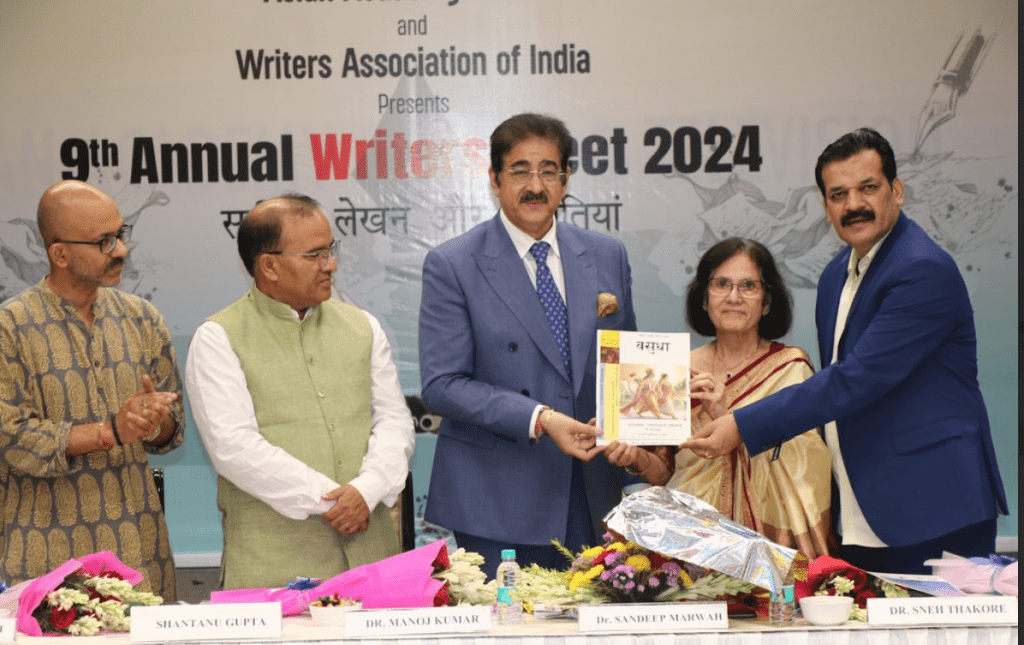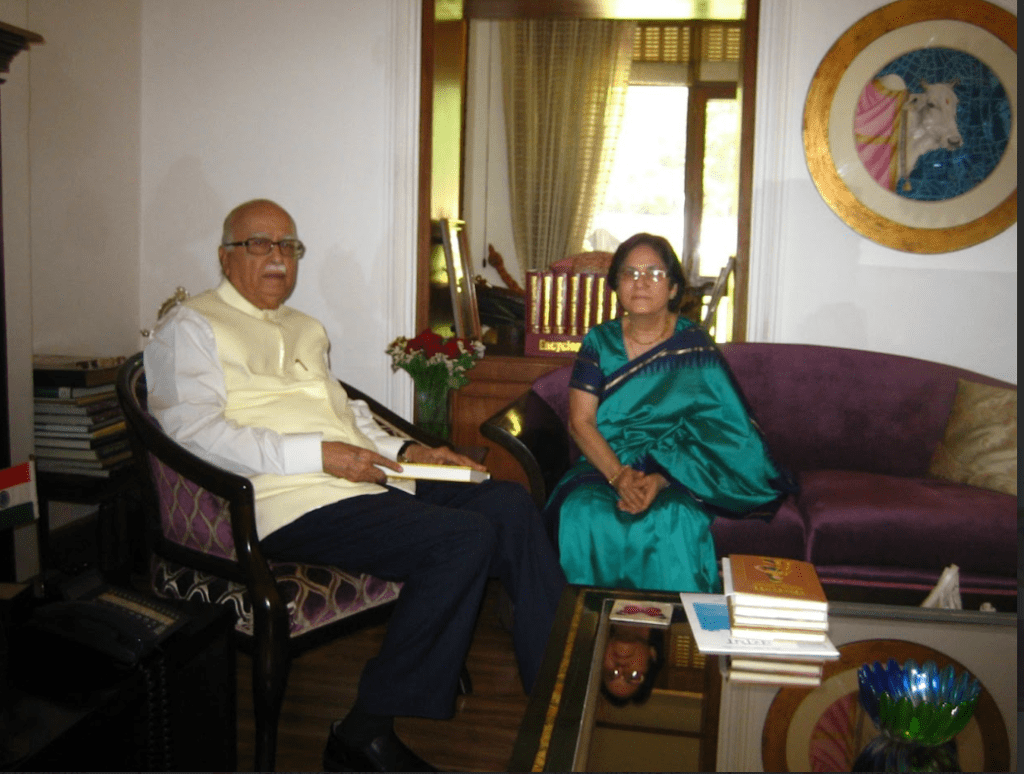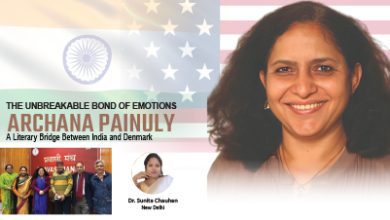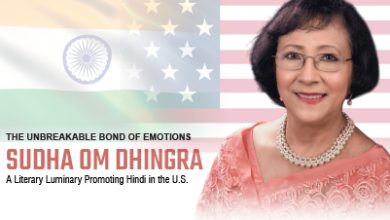THE UNBREAKABLE BOND OF EMOTIONS:- DR. SNEHA THAKUR
Chitrakoot to Canada: Dr. Sneha Thakur’s Story

A segment of Cafe Social Magazine dedicated to celebrating the stories of distinguished professionals who were born, raised, and educated in India and later moved abroad to achieve their professional dreams. Though they have become ‘foreigners’ by residing in other countries, their hearts still beat for their motherland, India. In this segment, we explore their journeys from Desh to Videsh and delve into the depths of their hearts to understand their connection to India.
Born in the sacred town of Chitrakoot, surrounded by ancient temples and spiritual stories, Dr. Sneha Thakur’s journey was always destined to be more than just ordinary. As the youngest child of a police officer father and a mother who loved bhajans, she grew up with stories, songs, and a deep sense of belonging to the land of India. Even as life took her across oceans, her heart remained firmly tethered to her roots, and her work, a blend of literature and art, became a bridge between India and the world.
A Heart That Never Left Home: The Journey of Dr. Sneha Thakur
Early Days in the Land of Many Colors
As a child, she traveled from one region of India to another, thanks to her father’s frequent transfers. At the time, it felt like a constant disruption—new places, new schools, and new people every few years. Yet, it was this very nomadic life that opened her eyes to the vastness and diversity of India. From the deserts of Rajasthan to the greenery of Kerala, she absorbed the many colors, dialects, and traditions of her homeland.

She recalls with fondness how her parents, especially her mother, ensured that their daughter’s education never suffered. “Even in places where girls’ schools were scarce, I was enrolled in boys’ schools. I was often the only girl, sitting quietly in a corner, focusing on my studies,” Thakur would later share. This isolation, she believes, became the seed of her deep love for writing and literature.
In school, Thakur’s talent for writing emerged early. Encouraged by teachers who praised her poetry, she began crafting verses, often hiding her name from them. “I found that writing a few lines of rhyme would earn me more marks, so I kept writing. But I never put my name on them,” she said with a smile. The fear of her family discovering her ‘nonsensical’ hobby kept her from taking credit, but over time, her family and teachers recognized her talent and encouraged her to pursue her love for literature.
A New Beginning Across the Ocean
In 1965, after her marriage, she moved to London, and a couple of years later, she and her husband settled in Canada. Life in a new country was both challenging and exciting. While the cities of London and Toronto offered new experiences, her heart never stopped longing for India. Her deep love for her homeland is best captured in her own words from the poem, “फिर भी आती है वतन की याद बार-बार” (Still, memories of the homeland linger again and again).
“We live in palaces now, but it’s the crowded courtyards of home that we miss.”
Despite being surrounded by the grandeur of her new life, her heart ached for the simple joys of her homeland—the hustle and bustle of Indian markets, the sound of her mother’s bhajans, and the warmth of family gatherings. These memories became the wellspring of her creativity, and soon, she began writing and painting to express this deep connection to India.
Building a Bridge Through Literature
Canada became her new home, but India remained her muse. In 2004, she founded Vasudha, a quarterly Hindi literary magazine, with the goal of connecting the Indian diaspora and promoting the beauty of Hindi literature around the world. Through Vasudha, Thakur brought together writers, poets, and artists who shared her love for Indian culture and the Hindi language.

In addition to her editorial work, Dr. Sneha Thakur authored several novels, poetry collections, and essays that explored Indian mythology, culture, and values. One of her most celebrated works, Kaikeyi Chetna-Shikha, reimagined the much-misunderstood character of Kaikeyi from the Ramayana, earning her critical acclaim and the Sahitya Akademi Award from Madhya Pradesh.
Her novels such as Lok-Nayak Ram, Sri Rampriya Sita, Dashanan Ravana, and Marutnandan Hanuman delve deep into the philosophical and moral lessons of Indian epics. Through her writing, Thakur sought not just to retell these ancient stories, but to offer new interpretations that resonated with modern readers. Her works offered a fresh lens through which to view these timeless characters, particularly the women, who she believed deserved a more nuanced portrayal.
An Artist of Many Mediums
While literature was her first love, she was also an accomplished artist. Her paintings, which have been exhibited in Canada and other parts of the world, often depict scenes from Indian mythology and culture. Her artworks, such as those of Meera, Ganesha, and traditional Indian brides, are not just aesthetically beautiful but also rich in cultural symbolism.
Her ability to blend the ancient and the modern, the East and the West, is what made her work stand out. she saw art as a way to preserve and promote Indian culture in a globalized world. “A simple pen can create worlds, lift nations, and transform minds,” she once said, emphasizing the power of creative expression, whether through words or visuals.
Balancing Two Worlds: East Meets West
Throughout her life, she straddled two worlds—the traditional Indian values she grew up with and the Western ideals she encountered in Canada. Instead of choosing one over the other, she believed in harmonizing the two. Her essay collection East-West reflects this philosophy, as she explored how both cultures could learn from each other.
“I never believed that one culture was superior to the other,” she explained. “Both have their strengths. My goal has always been to combine the best of both worlds and pass them on to the next generation.” This belief is reflected in her personal life as well, as she raised her children with a deep respect for Indian traditions while encouraging them to embrace the opportunities that the Western world offered.
Her home was a living example of this balance, with traditional Indian art on the walls, the smell of spices in the kitchen, and her children dressed in both jeans and sarees. Through her writing, she sought to pass on this wisdom to others, encouraging readers to stay rooted in their heritage while remaining open to new experiences.
The Expatriate’s Dilemma
Living far from home, she often wrote about the emotional struggles of expatriates, the sense of being caught between two worlds. Her poem “पीड़ा प्रवासी मन की” (The Pain of an Expatriate’s Heart) captures the heartache of living in a foreign land while longing for the familiar comforts of one’s homeland.
“Old memories linger, pulling the heart back to where love and warmth once thrived.”
These lines echo the sentiments of countless Indians living abroad, torn between the life they have built and the deep-rooted love for their motherland. she, through her writing, gave voice to these emotions, creating a sense of shared experience for the Indian diaspora.
A Message of Unity and Peace
Despite her years abroad, she never lost sight of her mission to promote peace, unity, and compassion through her work. A firm believer in the Indian philosophy of Vasudhaiva Kutumbakam—”The world is one family”—she dedicated her life to fostering understanding between cultures.
Her contributions to literature, art, and cultural diplomacy earned her numerous accolades, including the Hindi Sevi Samman from the President of India and the International Women Excellence Award. These honors are a testament to her lifelong dedication to preserving Indian culture and promoting global harmony.
A Legacy That Lives On
As Dr. Sneha Thakur enters the later stages of her life, her passion for creativity and cultural advocacy remains undiminished. She continues to work on new literary projects, including upcoming novels about Sumitra and Guru Gobind Singh. Her vision for the future is clear: a world where Indian culture is not only preserved but celebrated globally.
Dr. Sneha Thakur’s journey from the spiritual lands of Chitrakoot to the cosmopolitan streets of London and Toronto is a testament to the power of resilience, creativity, and love for one’s roots. Her life’s work, whether in literature, art, or cultural advocacy, has left a lasting legacy, reminding us all that no matter where we go, the heart always yearns for home.

President – VSSJ Research Centre, Kanpur






